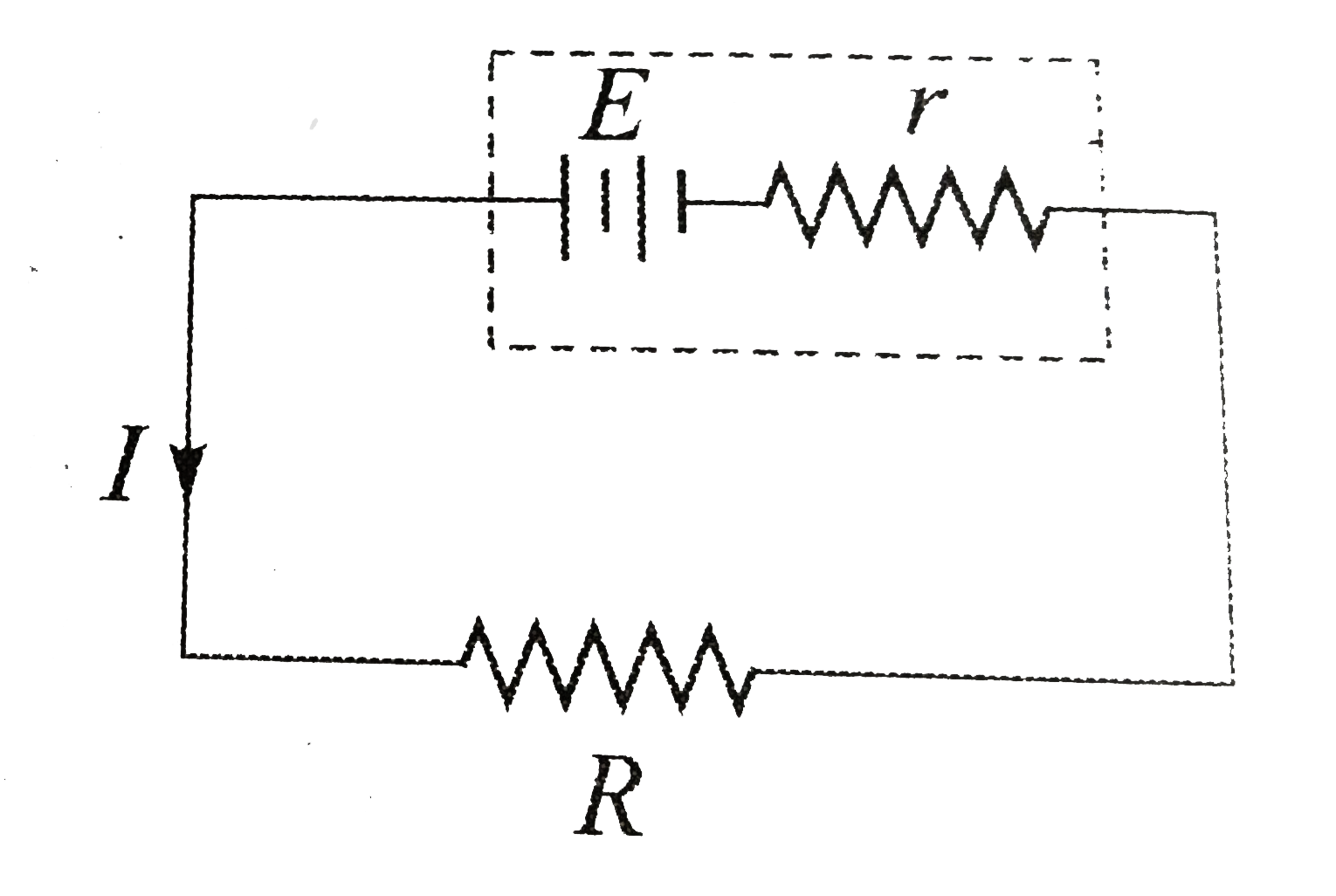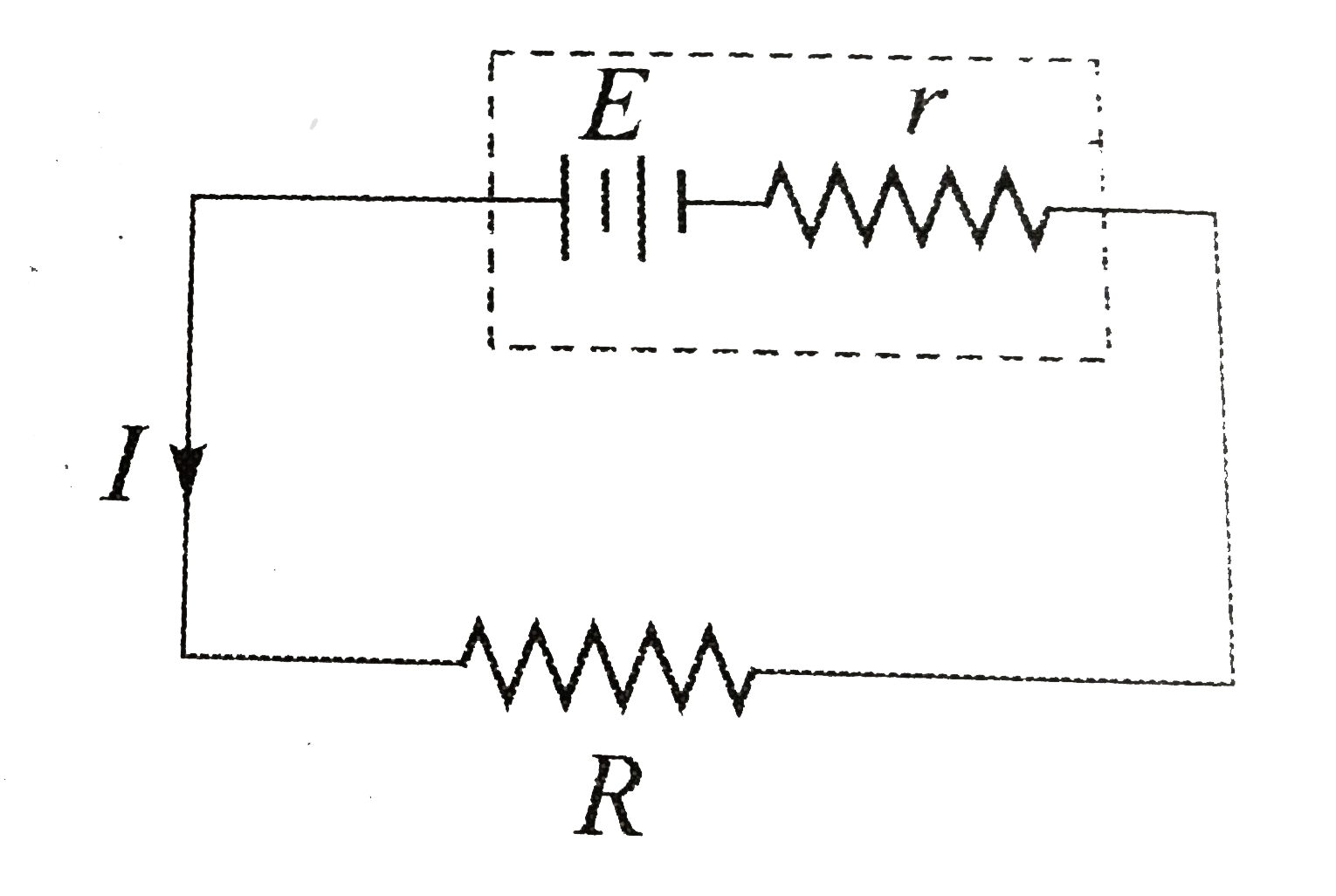Statement I: Since all the current coming to our house returns to powerhouse ( as current travels in a closed loop), there is no need to pay the electricity bill.
Statement II: The electricity bill is paid for the power used , not for the current used.
Statement I is True , Statement II is True , Statement II is a correct explanation for Statement I.
Statement I is True, Statement II is True , Statement II is NOT a correct explanation for statement I.
Statement I is True , Statement is False.
Statement I is False, Statement II is True.
The correct Answer is:D
Power used is . Hence , power is consumed , not the current.
Topper's Solved these Questions
- BOOK - CENGAGE PHYSICS ENGLISHCHAPTER - HEATING EFFECT OF CURRENTEXERCISE - Comprehension13videos
HEATING EFFECT OF CURRENT
- BOOK - CENGAGE PHYSICS ENGLISHCHAPTER - HEATING EFFECT OF CURRENTEXERCISE - Integer5videos
HEATING EFFECT OF CURRENT
- BOOK - CENGAGE PHYSICS ENGLISHCHAPTER - HEATING EFFECT OF CURRENTEXERCISE - Multiple Correct5videos
HEATING EFFECT OF CURRENT
- BOOK - CENGAGE PHYSICS ENGLISHCHAPTER - GEOMETRICAL OPTICSEXERCISE - Integer Type4videos
GEOMETRICAL OPTICS
- BOOK - CENGAGE PHYSICS ENGLISHCHAPTER - INDUCTANCEEXERCISE - Concept Based8videos
INDUCTANCE
Similar Questions
(a) A closed loop is held stationary in the magnetic field between the north and south poles of two permanent magnets held fixed. Can we hope to generate current in the loop by using very strong magnets?
(b) A closed loop moves normal to the constant electric field between the plates of a large capacitor. Is a current induced in the loop (i) when it is wholly inside the region between the capacitor plates (ii) when it is partially outside the plates of the capacitor? The electric field is normal to the plane of the loop.
(c) A rectangular loop and a circular loop are moving out of a uniform magnetic field region (Fig. 6.8) to a field-free region with a constant velocity v. In which loop do you expect the induced emf to be constant during the passage out of the field region? The field is normal to the loops.

(d) Predict the polarity of the capacitor in the situation described by Fig. 6.9.
 View Solution
View SolutionA thermal power plant produed electric power of 600kW at 4000V, which is to be transported to a place 20 km away form the power plant for consumer's usage. It can be transported either directly with a cable of large current carrying capacity or by sing a combination of step-up and step-down transfprmers at the two ends. THe drawback of the direct transmission is the large energy dissipation. In the method wsing transformers, the dissipatiion is much smaller. In this method a step-up transformers is used at the plant side so that the current is reduced to a smaller value. At the consumers'end, a step-down transformer is used to supply power to the consumers at the specified lower voltage. It is reasonable to assume that the power cable is purely resostive and the transformers are ideal with power factor unity. All the currents and voltagementioned are values.
In the method using the transformers assume that the ratio of the number of turns in the primary to that in the secondary in the step-up transformer is 1:10 if the power to the consumers has to be supplied at 200V, the ratio of the number of turns in the primary to that in the secondary in the step-down transformer isView Solution
Knowledge Check
- Question 1 - Select One
Looping in programming languages is a characteristic that facilitates the execution of a set of instructions/functions repeatedly while some condition evaluates as true. For example, loops in Java come into use when we need to repeatedly execute a block of statements. For loop delivers a concise way of writing the loop structure. Unlike a while loop, For statement consumes the initialization/ condition and increment/decrement in one line, there by providing a shorter, easy to debug structure of looping.
int values[ ] = {1,2,3,4,5,6,7,8,9,10},
for(inti=0,i System.out.println(values[i])
Predict the outputA10B15C11DNone of the above
The teachers of Geeta's school took the students on a study tirp to a power generating station, loactad nearly 200km away form the city.The teacher explained that electrical energy is transmitted over such a long distance to their city, in the form of alternating current (ac) raised to a high voltage. At the receiving end is the city, the voltage is reduced to operate the devices. As a result, the power loss is reduced. Geeta listened to the teacher and asked question about how the ac is converted to a higher or lower voltage.
(a) Name th device used to change the alternating to a higher or lower value. State one cause for power dissipation in this device.
(b) Explain with an example, how power loss is reduced if the energy is transmitted over long distance as an alternating current rather than a direct current,
(c) Write two values each shown by the teachers and Geeta.View SolutionStatement I : The wires supplying current to an electric heater are not heated appreciably.
Statement II: Resistance of connecting wires is very small and H∝R.View SolutionStatement 1: The circuits containing capacitor be handled cautiously even when there is no current. Statement 2: A charged capacitor, can discharge through our body and harm us.
View SolutionStatement I: no electric current will be present within a region having uniform and constant magetic field.
Statement II: Within a region of unifrom and cinstant magnetic field →B, the path integral of magnetic field ∮→B.d→l along any closed path is zero. Hence, from Ampere cirauital law ∮→B.d→l=μ0I (where the given terms ahve usual meaning), no current can be present within a region having uniform and constant magnetic field .View SolutionElectric fuse is a protective device used in series with an electric circuit or an electric appliance to save it from damage due to overheating porduced by strong current in the circuit or application. Fuse wire is generally made from an alloy of lead and tin, which has hifh resistance and low melting point. It is connected in series in an electric installation. If a circuit gets accidentally short-circuited, a large current flows, then fuse wire melts away, which causes a break in the circuit. The power through fuse (F') is equal to heat energy lost per unit area per unit time (h) (neglecting heat loses from ends of the wire).
P=I2R=h×2πrl[R=ρlπr2]
where r and l are the length and radius of fuse wire, respectively.
A Battery is described by its emf (E) and internal resistance (r). Efficiency of battery (η) is defined as the ratio of the output to the input power.
η=OutputpowerInputpower×100%

But I=E/(R+r), input power = EI.
Output power =EI−I2r, then.
η=(EI−I2rEI)×100=(1−IrE)×100
=[1−(ER+r)(rE)]×100=(RR+r)×100
We know that output power of a source is maximum when the external resistance is equal to internal resistance, i.e., R = r .
Two fuse wires of same potential , material have length ratio 1:2 and ratio of radius 4:1. Then respective ratio of their current rating will beView SolutionIn a fuel cell, hydrogen and oxygen react to produce electricity. In process, hydrogen gas is oxidized at the anode and oxygen at the cathode. If 67.2L of H2 at STP reacts in 15min , what is the average current produced ? If the entire current is used for electro− deposition of copper from copper (II) solution, how many grams of copper will be deposited ?
Anode reaction :H2=2c−OH→2H2O+2e−
Cathode reaction :O2+2H2O+2e−→4c−OHView SolutionElectric fuse is a protective device used in series with an electric circuit or an electric appliance to save it from damage due to overheating porduced by strong current in the circuit or application. Fuse wire is generally made from an alloy of lead and tin, which has hifh resistance and low melting point. It is connected in series in an electric installation. If a circuit gets accidentally short-circuited, a large current flows, then fuse wire melts away, which causes a break in the circuit. The power through fuse (F') is equal to heat energy lost per unit area per unit time (h) (neglecting heat loses from ends of the wire).
P=I2R=h×2πrl[R=ρlπr2]
where r and l are the length and radius of fuse wire, respectively.
A Battery is described by its emf (E) and internal resistance (r). Efficiency of battery (η) is defined as the ratio of the output to the input power.
η=OutputpowerInputpower×100%

But I=E/(R+r), input power = EI.
Output power =EI−I2r, then.
η=(EI−I2rEI)×100=(1−IrE)×100
=[1−(ER+r)(rE)]×100=(RR+r)×100
We know that output power of a source is maximum when the external resistance is equal to internal resistance, i.e., R = r .
The maximum power rating of a 20.0Ω fuse wire is 2.0kW. This fuse wire can be connected safely to a DC source (negligible internal resistance) ofView Solution

